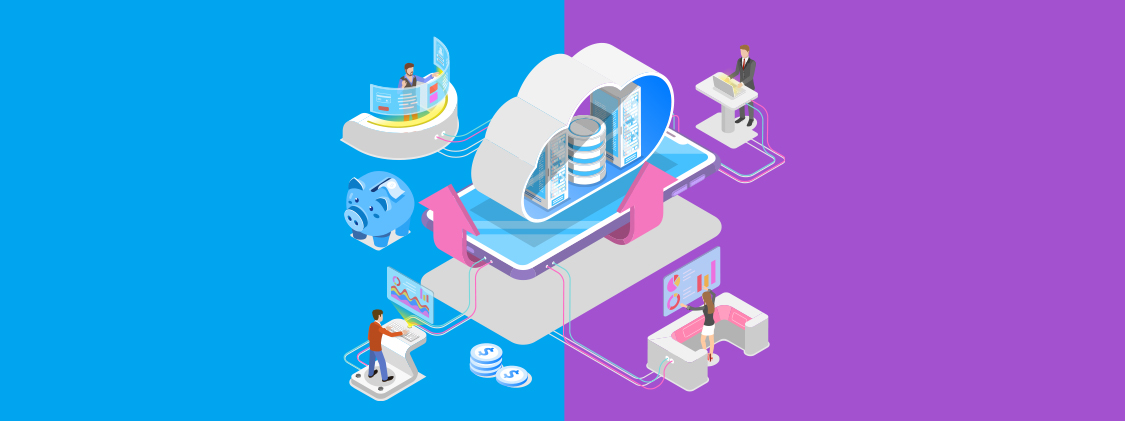What is Repurchasing in the Cloud?
As we have outlined numerous times in Webapper articles, a growing number of organizations are moving their operations to the cloud to save money and improve productivity. We already described other cloud migration options, like rehosting and refactoring, which are the simple and complex ends of the spectrum. Somewhere in the middle is repurchasing (also known as “drop & shop”) which means moving to a different product. In some cases, you could simply switch licenses to a service-based model (such as MS-Office to Office365), but in most cases it requires changing to a new product that is cloud native. Since it is cloud-based, repurchasing can often save on staffing and application maintenance and storage costs.
Examples of Repurchasing
You may already use Software as a Service (SaaS) solutions like Google Workspace, Slack, or Zoom. These systems are often easily introduced because they are entirely new or foundational to other requirements. If you’re taking a bigger step toward the cloud, three common examples you may face are:
Storage
Local storage networks are saddled with many challenges. Cloud storage began its rise in the late 1990s and has become ubiquitous.
Customer Relationship Management (CRM)
At the core of most businesses is a CRM. We literally have hundreds of SaaS CRM options to choose from broad-based options like SalesForce and Hubspot, or some quite industry-specific ones. Staff gain the advantages of mobility quickly.
Accounting
Bypassing security concerns from the early days, most accounting software systems are now cloud-based. From small business solutions like QuickBooks to the big iron systems like SAP, the popularity of cloud-based accounting is on the rise.
Why Repurchasing Makes Sense
End of Enterprise/Monolith Applications
The idea of enterprise software licenses already seems dated: paying a large up-front license fee, allocating hardware resources, and locking into a big, monolithic system. The application is often a walled garden, isolated from external access and integrations. Need to update? Backup, download, install, test…
Flexibility
SaaS took over the software industry because it’s far more agile and open. Integrations are numerous (open systems), updates are largely seamless, and wide access is the default. Vendors can move quickly to address new requirements or product defects.
Operating Costs
Aside from the reduction of capital expenditures, operating expenses can also be minimized. Less “real estate” is required with a smaller footprint, and other operating costs like electric bills decline.
Less Administrative Overhead
As a corollary to saving on operating costs, manpower requirements decline as well. Fewer IT staff are needed to keep the engines running.
Better Features
In addition to flexibility, modern applications offer better features. Atop the list are solutions like mobile access, but with open systems, so many combinations are available to add more value.
Why Repurchasing May Not Always Work
Vendor Lock-in
A downside of SaaS or licensed software is commitment to a vendor. If you’ve written your own software, you’re the vendor, with total control. When you enter a software agreement, you’re locking in for a time frame.
Challenges of Migrating
Something we face regularly in cloud migrations is migrating (live) data. It’s not easy. Neither are some of the needed integrations.
One Size Does Not Fit All
If you’re running custom software, or have a highly-tailored on-premise solution, you may feel the pinch of losing some features and functionality. Packaged software is a bit more brittle in some ways, perhaps designed for a wider audience than just you…
Limited Data Access
When data lives on-premise, you can do all kinds of custom reporting. You may lose that freedom with a SaaS solution.
Culture and Process
Your staff may like “the way we’ve always done it”. Change management can be tricky.
Planning for Repurchasing
Get Stakeholders Involved
Involve your team in gathering requirements and vetting vendors. If they have a say during the process, change management is an easier sell. Waiting until the end and springing a decision on them is a recipe for resistance.
Plan
Plan your configuration and data migration to the new solution, considering all the functions you need to include. Try to identify any blockers early in your planning so you’ll have time to resolve them.
Analyze Costs
You’ll definitely need to understand the licensing model. Determine the repurchased system setup fees, internal costs, and operating budget.
Map & Understand Trade-offs
Since one size does not fit all, you have to realize the trade-offs in what you gain and what you lose. Make sure your team realizes they need to be nimble, especially in the early days.
Start
Don’t get lost in analysis paralysis. If you’ve taken care of planning, messaging to stakeholders, and financing, you’re ready to go.
Cloud Migration via Repurchasing
As more organizations move operations to the cloud, solutions get even more robust. The cloud economics become more obvious over time. Organizations save money and become more productive. More cloud usage means more SaaS solutions, and more competition means better software at better prices. The move is on – and repurchasing is one of the easier ways to get going.


Leave A Comment